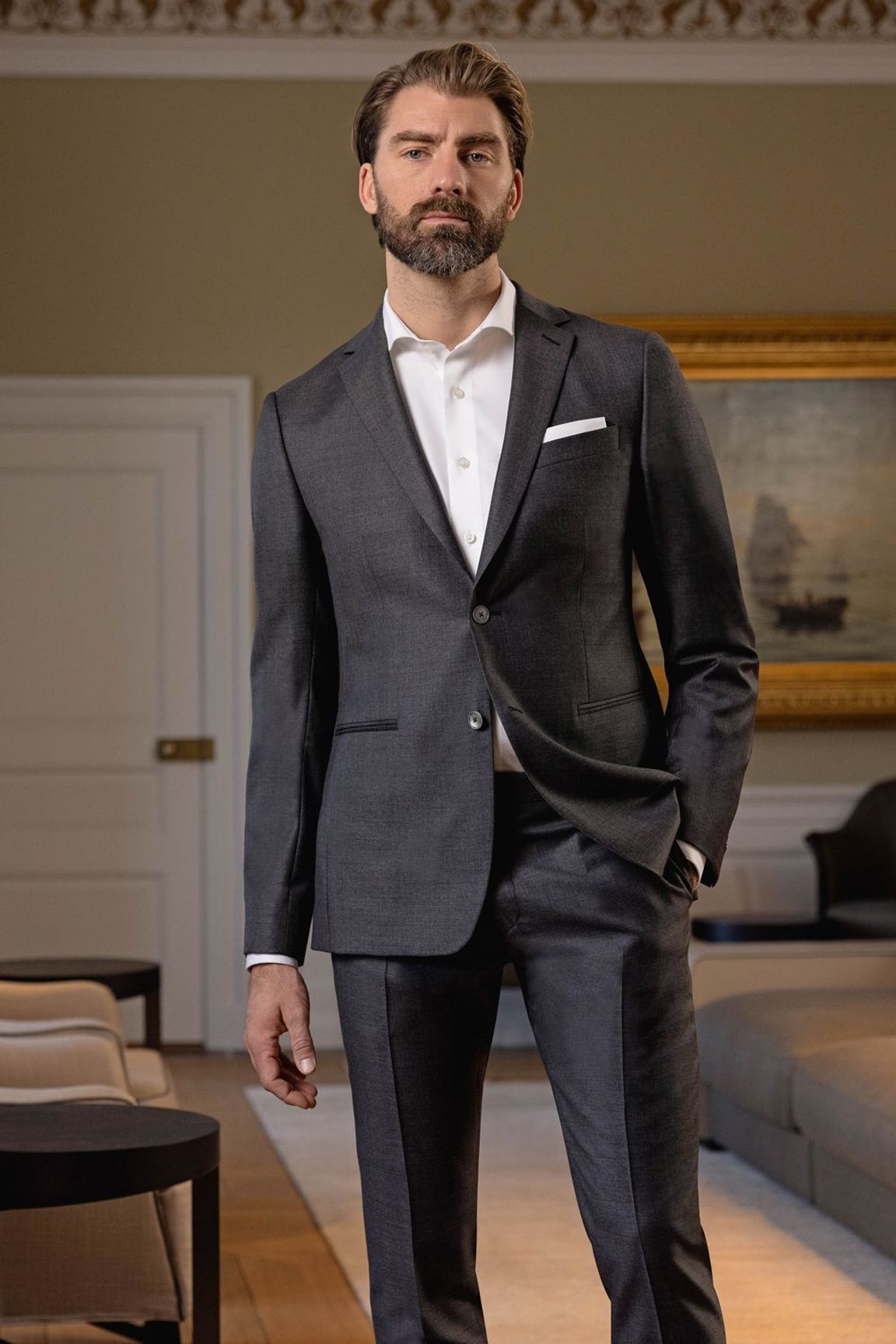Tailored Suits Perth: Costs Custom Suits for each Occasion
Tailored Suits Perth: Costs Custom Suits for each Occasion
Blog Article
Recognizing the Tailoring Refine: From Fabric Selection to Final Suitable for the Perfect Wardrobe
The customizing process is a complicated interplay of art and science, beginning with the crucial choice of textile choice and finishing in the exact changes of final fittings. Each material type brings one-of-a-kind qualities that affect not just the aesthetic appeal yet likewise the garment's longevity and viability for various events.
Relevance of Fabric Option
Choosing the best material is critical in the tailoring process, as it straight influences the comfort, durability, and general visual of the last garment. The option of textile sets the structure for the garment's efficiency, capability, and style. Different fabrics possess distinct buildings, such as breathability, stretch, and weight, which can significantly affect how the garment drapes and fits the body.

A tailored item made from a proper fabric not just showcases craftsmanship yet also boosts the wearer's self-confidence. As a result, recognizing the nuances of textile selection is critical for any customizing endeavor. It ensures that the end product not only satisfies the aesthetic wishes of the customer but also lines up with useful requirements, therefore achieving a harmonious equilibrium between type and function in the tailored wardrobe.
Types of Fabrics and Their Uses
Comprehending the numerous kinds of fabrics available is crucial for making educated decisions during the tailoring process. Each fabric possesses one-of-a-kind characteristics that dictate its viability for certain garments and celebrations.
Its flexibility enables it to be tailored into whatever from tee shirts to dresses. Its natural flexibility aids garments keep form over time.
Silk shows deluxe and is light-weight, making it excellent for eveningwear and fragile shirts; nonetheless, it needs cautious handling because of its delicacy. Bed linen, with its textured surface, is a popular option for warm environments, giving a crisp and ventilated feel, yet it wrinkles easily, which may influence the garment's look.
Artificial materials, such as polyester and nylon, offer sturdiness and resistance to wrinkles, making them suitable for everyday wear and active garments. Comprehending these fabric types and their residential or commercial properties permits better decision-making, making certain that each customized piece not only fits well yet additionally lines up with the intended purpose and celebration.
The Tailoring Methods Discussed
The art of tailoring depends on a range of techniques that change material into well-fitted garments. Central to this procedure is pattern preparing, where a tailor develops themes based on the customer's dimensions and desired design. This preliminary action makes certain that the garment will fit the user effectively prior to any kind of reducing happens.
When patterns are developed, cutting techniques enter into play. Precision is extremely important as inaccuracies can lead to misfitting garments. Tailors often make use of various reducing methods, such as single-layer reducing for elaborate layouts and multiple-layer cutting for performance on conventional patterns.
Basting is another necessary technique, enabling dressmakers to temporarily sew fabric items with each other for a preliminary installation (custom suits perth). This technique supplies the opportunity to analyze the drape and overall shape prior to last sewing
Seaming techniques, consisting of flat-felled joints and French joints, improve the garment's durability and aesthetic charm. Tailors also utilize strategies such as interfacing and padding to offer framework and form to particular locations, like collars and shoulders.
Last but not least, finishing methods, consisting of hemming and side finishing, make certain the garment's long life while supplying a sleek look. With each other, these strategies create the backbone of efficient customizing, resulting in splendid, tailor-made apparel.

Fitting Modifications and Considerations
After the first customizing techniques have actually been applied and the custom suits perth garment is constructed, suitable adjustments come to be critical to achieving the perfect fit. These changes resolve different elements of the garment, ensuring it contours to the user's physique and boosts general appearance.

The rise of trousers is an additional critical variable; it must rest comfortably over the hips without causing discomfort, permitting for ease of motion. Hemming lengths for both trousers and skirts should reflect the user's recommended style while valuing proportions.
Furthermore, interest needs to be offered to the back of the garment, making certain that there are no unsightly pulls or excess fabric - tailor suits perth. Each modification must be diligently considered, as even small changes can significantly impact the overall fit and visual of the customized piece, eventually bring about a closet that exudes confidence and elegance
Preserving Your Tailored Clothes
Always adhere to the treatment label directions, which may recommend completely dry cleansing for delicate textiles or device cleaning for more long lasting materials. Avoid constant laundering, as this can put on down the material and alter the garment's shape.
Storage space is similarly essential; use cushioned hangers for jackets and layers to preserve shoulder structure, and shop pants folded neatly or hung to prevent creasing. Safeguard garments from straight sunlight, which can discolor shades and damage fibers.
Furthermore, periodic assessments for minor repair services can prevent bigger issues. Look for loosened buttons, tearing seams, or indications of moth damages, dealing with these troubles promptly to keep the garment's honesty.
Finally, consider seasonal rotation. Putting on tailored items in moderation permits fabrics to recuperate, expanding their life-span. By applying these upkeep approaches, you can make certain that your customized garments remain as beautiful as the day you first wore them, enhancing your perfect closet for several years to find.
Final Thought
The customizing process, encompassing fabric selection, proficient strategies, and precise fitting adjustments, plays a vital duty in creating garments that enhance both comfort and style. Each stage adds to the total efficiency of the end product, making sure that clothes not only fits well however additionally mirrors individual identification. In addition, comprehending the value of upkeep expands the life of customized garments, strengthening their worth in a well-curated closet. A detailed technique to tailoring finishes in a polished and certain look.
Report this page